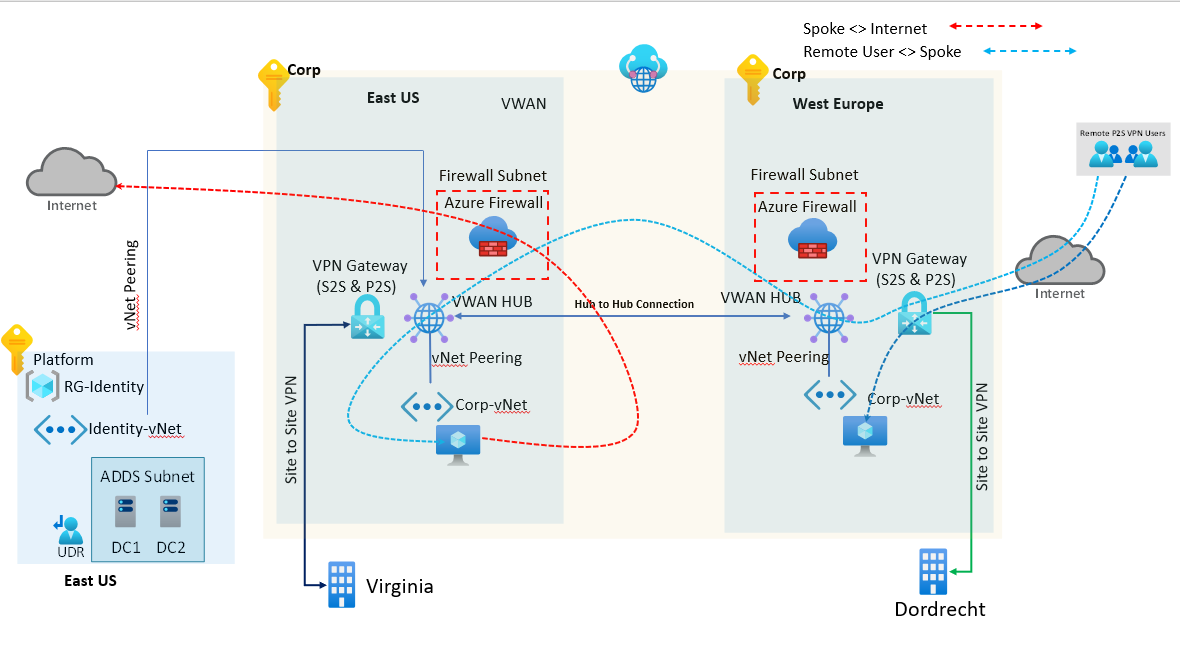Azure Infrastructure for a global, multicontinent manufacturing firm
A leading polymer manufacturing company leapfrogs into creating Azure Infrastructure on its way to the cloud

The Challenge
As the manufacturing firm embarks on its first venture into Azure infrastructure, it organization faced the significant task of designing a network to host their workload and integrate their SAP RISE subscription effectively. With operations sprawling across multiple continents, the complexity of managing intricate supply chains and distributed production facilities was immense. The necessity for a unified network architecture that could not only streamline these dispersed operations but also uphold rigorous security and performance standards was paramount.
The firm required a solution that would not only support the heavy demands of their international supply chain logistics but also seamlessly integrate critical business processes managed through SAP RISE. This integration needed to ensure that data flows smoothly between systems, maintaining integrity and availability without compromising security or operational efficiency.
In pursuit of these objectives, the company sought a robust platform that could provide comprehensive connectivity solutions, advanced security measures, and reliable performance across all its geographical locations. The challenge was not just to create a network but to engineer a resilient framework that could support the dynamic and evolving needs of a global manufacturing enterprise.
The Solution
To address the complex requirements of the manufacturing firm's global network, Netwoven implemented a strategic solution that combined Microsoft's Cloud Adoption Framework (CAF) and Azure Landing Zones with modular accelerators. This approach provided a structured environment to host management groups, apply policy settings, establish virtual networks, and define resource groups along with implementing a consistent naming convention standard. These measures ensured streamlined hosting and governance from the outset.
Utilizing Azure Virtual WAN
Recognizing the need for a unified and secure network that could integrate seamlessly across multiple continents, Netwoven selected Azure Virtual WAN as the cornerstone of the firm’s networking strategy. This solution utilized Azure’s extensive global infrastructure to establish a centralized, secure, and resilient network environment, ideal for supporting the firm's distributed operations and SAP RISE integration. Azure Firewall was deployed in conjunction with network segmentation strategies to safeguard sensitive data and manage traffic securely between the spokes and the cloud.
Network Expansion and Integration
The expansion of the existing network was meticulously planned to include the design of subnets for corporate and shared services, crucial for maintaining organized and secure network segments. Netwoven’s role extended beyond planning; we also supervised the implementation of these network structures on Azure.
To further enhance connectivity and resilience, a global transit network was developed. This network bridged operations between two key continents: East US and West Europe. By connecting the firm’s existing private SD-WAN to this new Azure-based network, Netwoven ensured that the manufacturing firm’s international sites were not only interconnected but also benefitted from enhanced security and performance, pivotal for the real-time operations of a global enterprise.
To visually encapsulate the implemented solution, an architectural diagram of the Azure Virtual WAN setup was developed. This diagram provides a detailed visual representation of the network infrastructure, illustrating the interconnected setup across the global sites, the integration with the existing private SD-WAN, and the strategic placement of subnets for corporate and shared services.

Benefits
- Enhanced Security: Strong, consistent security policies enforced across all network traffic ensured that the firm's data remained protected against potential threats.
- Unified Network Management: Centralized control over the network reduced complexity and operational overhead, enabling more efficient management of resources.
- Improved Performance: The global nature of Azure’s infrastructure significantly reduced latency and improved data throughput across continents.
- Scalability and Flexibility: The firm gained the ability to scale its network capabilities effortlessly and integrate new sites into its network without significant capital investments.


















